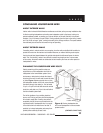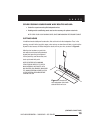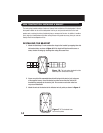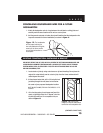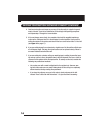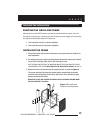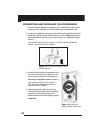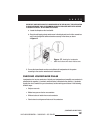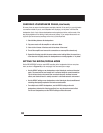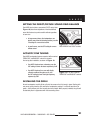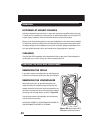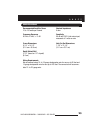
CHECKING LOUDSPEAKER PHASE (CONTINUED)
Of course, there are some wires that appear completely identical. So be careful, or you might make
a connection mistake. If you do, one loudspeaker will be playing “out-of-phase” with the other
loudspeaker. A pair of out-of-phase loudspeakers works against each other, and the sound of the
two playing together will be lacking in bass and sound “phasey.” If you suspect the sound is not
right, and you cannot see any markings on the wire, try this simple test:
1. Stand halfway between the loudspeakers.
2. Play some music with the amplifier or radio set to Mono.
3. Listen to the richness of the bass and the loudness of the sound.
4. Turn off the amplifier and reverse the connections on one amplifier channel only.
5. Repeat the listening test with the same volume control setting. When the sound has a
richer bass and is slightly louder, the loudspeakers are working together or “in-phase.”
SETTING THE BIPOLE/DIPOLE MODE
Set the BIPOLE/DIPOLE switch on each HDFX according to the loudspeaker’s side or rear place-
ment, as shown in Figure 18 (on the next page). Here are some tips on usage:
• Use the DIPOLE setting on rear loudspeakers when listening to movies and classical
music. The sound will be less focused as it is reflected along the room’s boundaries.
This is the best choice, since most films are mixed using non-localized surround
effects, and classical music is usually recorded in a favorable acoustic environment.
• Use the BIPOLE setting on rear loudspeakers when listening to discrete multichannel
recordings that equally emphasize front and surround sounds.
• For multiple sets of HDFX loudspeakers, use the BIPOLE setting on the side
loudspeakers (aimed at the listening position) for a more focused surround effect.
For the rear loudspeakers, use the DIPOLE setting to diffuse the sound.
20



